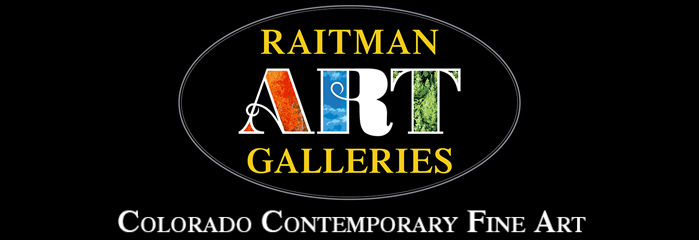Craig Ruwe Artist Biography
Craig Ruwe learned the experimental techniques utilized in his art under the tutelage of Fred Uhl Ball. Ball’s innovations in the 1960s garnered him worldwide acclaim as a master of large-scale enamelwork with over forty-five public commissions recorded at the Archives of American Art, the largest of which is “The Way Home.” “The Way Home” is a 24’ by 62’ installation on a municipal parking garage at 3rd and L Streets in Ball’s hometown of Sacramento. Ruwe, of Long Beach, California at the time, assisted Ball in this massive installation.
After moving to New Mexico in 1986, Ruwe innovated methods to create gradient imagery within the enamel and refined the presentation, using framed glass and later the metal itself as framing. On his art, Ruwe wrote, “The experimental techniques that I use were pioneered and developed by the late Fred Ball, a California artist who in the 1960s began using transparent glazes and non-traditional firing techniques on thin gauge metals. Enamel in its powder form (made up of silica and lesser parts soda and lime with metal oxides such as gold, cobalt, manganese, tin, platinum and titanium added to produce color) is sifted onto the metal and then heated in a kiln at 1200-1700 degrees Fahrenheit until the powder melts, fusing to the metal to produce a thin, glass-coated sheath of foil.
The color and texture of the work can be altered by varying the density of the application of the powder enamel, by adjusting the temperature and time of the firings, and by performing repeated firings. The kiln used is quite small, and the individual pieces of copper that make up the completed work are all fired separately and then laminated together. The final piece is coated with an acrylic finish to prevent any exposed copper from oxidizing. All the enamels used are transparent; the unique glowing color quality of the work is caused by light traveling through the enamel and reflecting off the polished surface of the underlying copper. This color will not fade over time even when placed in direct sunlight, a quality which makes the work unique among framed wall hangings.”
Under the demands of a large commission in 2001, Ruwe engaged the painter and sculptor Zingaro (1954-2019) to assist him. This arrangement continued until Ruwe’s death in 2004. Ruwe made it a point to share his unique processes with as many artists as possible. The story goes that while on his death bed, Ruwe challenged Zingaro with finding seven individuals to carry on his techniques. Ruwe’s partner David Snow, the artist Philip Smith, and Houston Llew, the creator of Spiritiles, carry on Craig Ruwe’s legacy and mastery of the Vitreous Enamel medium.
